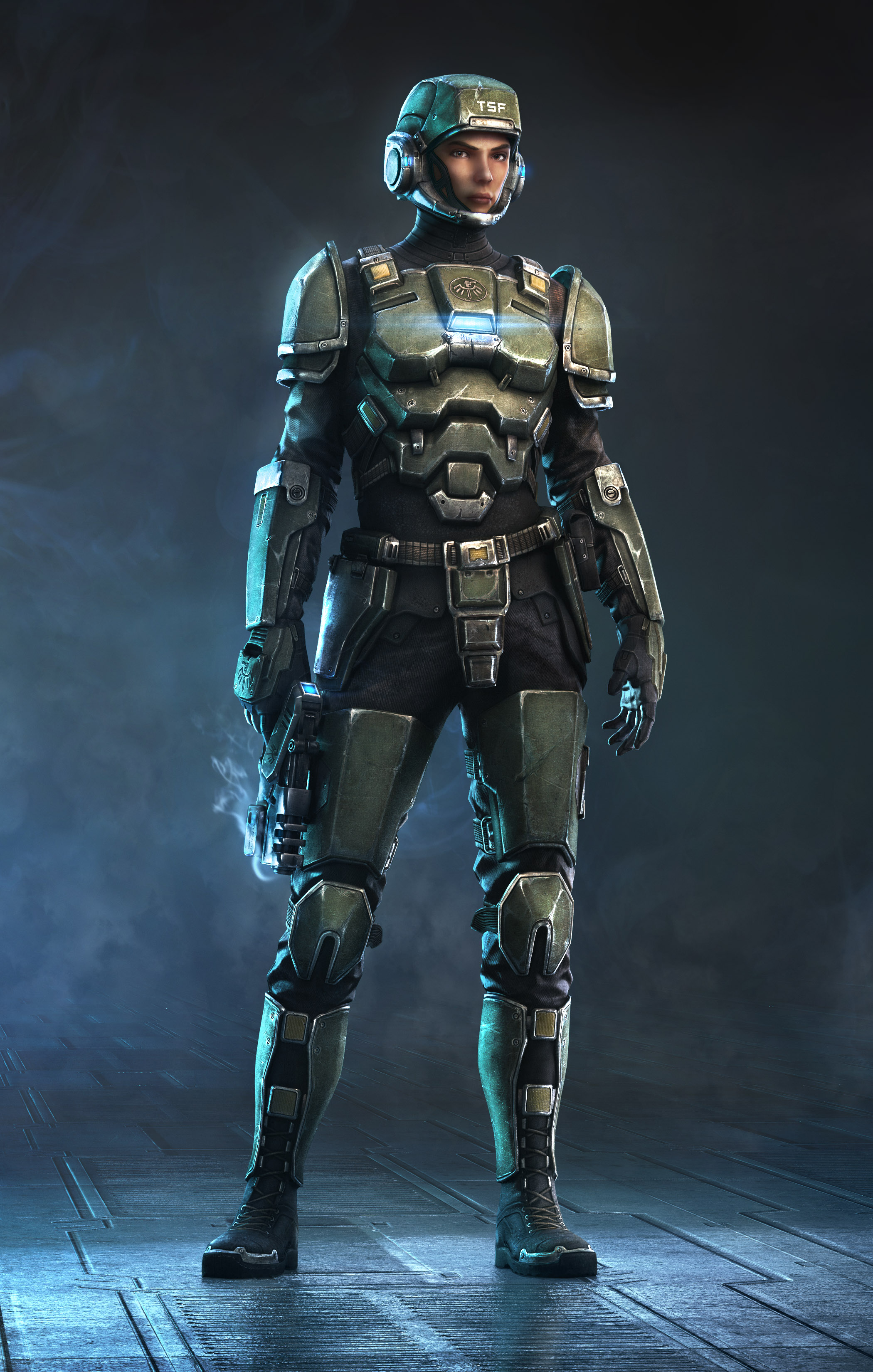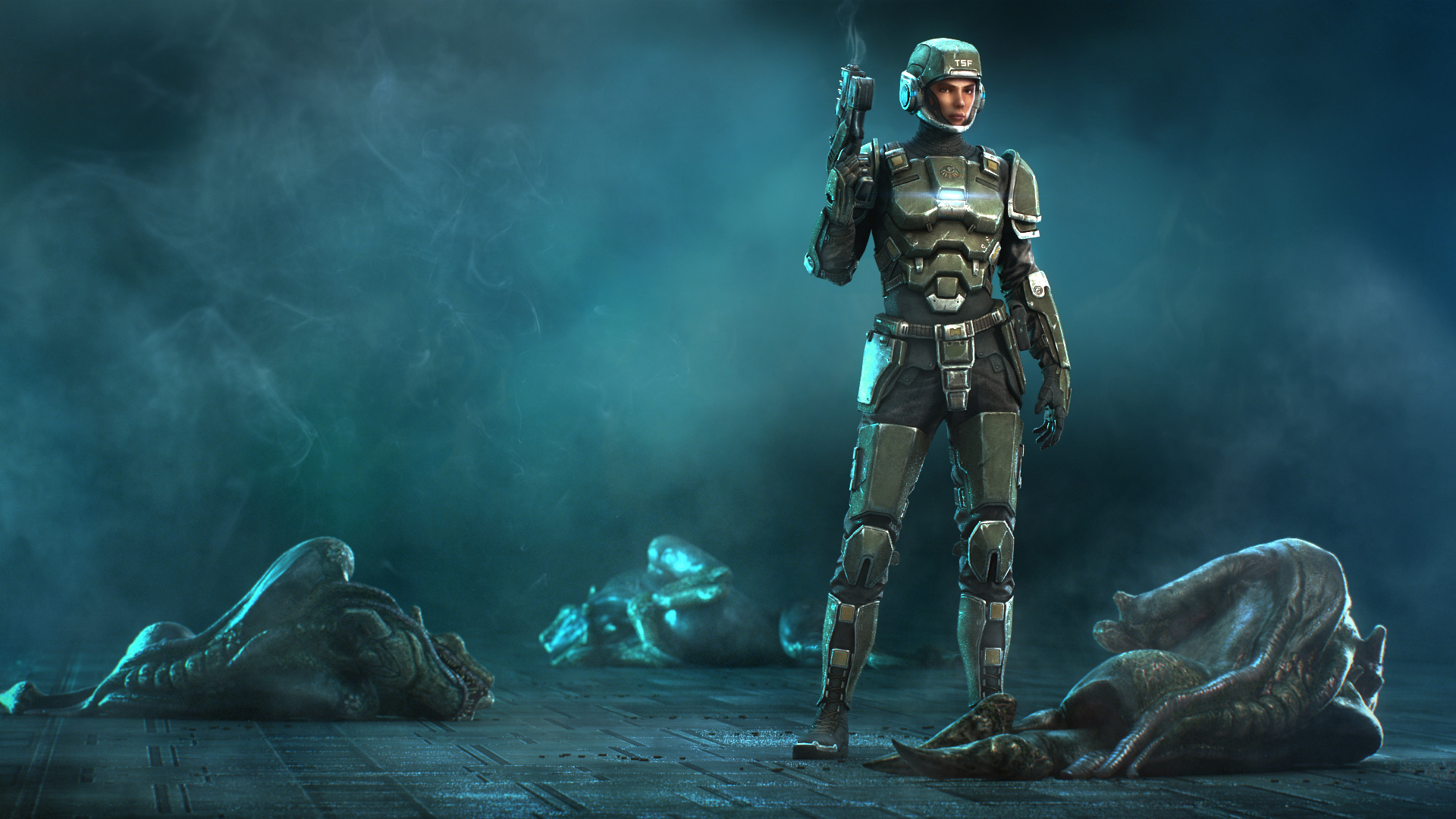
Featured Blog | This community-written post highlights the best of what the game industry has to offer. Read more like it on the Game Developer Blogs.
Ending Booby Armour: Creating art, and not just for art’s sake
The game industry has not fully matured. Out of this relative immaturity is born a sense of insecurity: Are games art? The new female Natural Selection 2 marine stands as an exhibit in support of the affirmative case.

Game development updates regularly grace the Unknown Worlds (UWE) blog. It is possible to determine what updates the community finds most interesting by applying fuzzy logic to reactions on Twitter, Facebook, Google+ and other tools. Naturally, news that receives relatively more 'retweets,' 'shares,' 'likes,' and so on may be considered more engaging.
The most engaging news that UWE has ever posted was the launch of Natural Selection 2 on Halloween 2012. Other big ones include the reveal of new weapons, maps, and features. Giant robots with miniguns attached to each arm tend to incite social media excitement. This is perhaps to be expected, and why what happened on July 4 warrants close examination.
On that Thursday, UWE revealed a new playable Natural Selection 2 character. This character has gameplay attributes identical to existing characters. Her armour style is near identical to an existing character. She runs at the same speed, has the same amount of health, the same sized hit-boxes, the same weapon handling characteristics. Put simply: This character is functionally nothing new. And yet on that day, our fuzzy logic sensors lit up as if we had just re-launched the game.
Ending Booby Armour: Creating art, and not just for art’s sake
The game industry has not fully matured. When discussing our profession with others, we must often awkwardly prefix references with 'video' or 'computer.' Despite continuing strides in market penetration, a significant proportion of people in developed economies do not play our games as they would read a book, watch a film or listen to an album. Out of this relative immaturity is born a sense of insecurity: Are games art?
This question is perennial in gaming circles. To us, the answer appears absurdly obvious. We watch as our colleagues paint creative concepts, record unique sounds, write stunning shaders, sculpt intriguing characters, and design elegant mechanics. These products coalesce to transcend their sum, yielding experiences that are cognitively challenging, rich in sensory stimulation and in the best cases emotionally captivating.
In Half Life 2, we ponder freedom of the individual as we 'pick up that can'. The bloodied halls of Hotline Miami invite introspection about violence. Smashing into police barriers in Grand Theft Auto is almost incidental against the backdrop of a witty, poignant, sometimes wrenching commentary on socioeconomic inequality and cultural degeneration. The list goes on ad infinitum. We know our art is not all about blowing up faceless bad guys as they attack star spangled banners.
Yet to that proportion of people that is not comfortable with gaming, our profession often appears as a simple blur of guns, gore and gratuitous violence. We see poignant social commentary; they see their children pressing ‘X’ to decapitate someone who possesses an unfamiliar accent. This state of affairs is not what we want for our industry, our profession, our obsession. Surely a society in which Papers Please can be discussed alongside Othello or Of Mice and Men is one to which we aspire.
Thankfully, this challenge is not unique to games. Art forms that are celebrated today were once regarded with disdain by those yet to be touched by their magic. At the turn of the century, motion pictures were an oddity, a pop culture obsession derided as artistically inferior to the written word or concert hall. Baroque composers challenged the established Renaissance order, Impressionists had to content with upturned noses from the Académie.
The transition from derision to significance is borne of both creative flair and engagement with cultural debate. The beauty of Monet's Sunrise is reason enough to celebrate a new style, look further and find Degas' juxtaposition of high and low classes inviting social commentary. For games to achieve the artistic recognition we know they deserve they must do something to further the cultural discourse of our society.
Surely to make such a contribution, we would need to be very clever. It is already hard enough to create games with engaging art styles, mechanics and technology - let alone make them profitable! Would playing in the sandpit of the commentariat not be the proverbial last straw?
Consider the female Natural Selection 2 (NS2) marine. Her inclusion is not a revolutionary act, she is simply a player model: A piece of 3D, texture, sound and animated art. She has the exact same gameplay attributes as the existing male marine, right down to a near identical hit-box. She is a simple construct that had anything but a simple effect on the NS2 community.
The level of interest her reveal generated put her in the top 4% of posts ever made to the NS2 Facebook page. Similar interest was evident across our other social media feeds. This was all the more remarkable as we did not pay to promote this post, as we normally would to generate a top-5% piece of content.
She generated almost as many press articles as our most recent 'Content Update:' Gorgeous - A mini-expansion that we put our full promotional weight behind. She created a firestorm of user commentary. Players filled Unknown Worlds developer inboxes with messages of gratitude, while forum moderators worked overtime to keep our discussion boards civil as threads about gender equality exploded.
This was not a clever attempt to engineer social debate. This was the addition of a new character to a game. A new character that happens to be represented in the right way, a female soldier that looks like a soldier. Some of us at Unknown Worlds were quite invested in her creation, and view it as representing a stand against unacceptable gender tropes in gaming.
But she was not the 5th Symphony, or the Mona Lisa. As technically and creatively competent as her 3D model file is, she is not intrinsically a stunning work of art. We as game developers do not have to step beyond our existing repertoire to create something poignant, it is as simple as introducing an element of moral direction to our current development activities. Thus by engaging a simple truth - 'a female soldier is as much a soldier as any male' - and applying our existing skills, we have furthered the cause of games as art.
It is in the simplicity of that truth that a second, more important motivation for artful game making may be found. So what if, as I have argued for above, games attain a level of acceptance that sees them dissected between sips of champagne at society tables? That is not a commendable goal. It is perhaps a commendable symptom - A symptom of us as game developers doing something right.
Unknown Worlds found that doing something right in the games industry was exceedingly simple. As developers, that simple thing was born of who game developers tend to be: We are mostly educated, mature and socially alert human beings. If we were not, we would not be working in an industry with such stunning creative, financial and technological potential. We may hold some truths to be self-evident:
Women to do not look like Barbie dolls. That the mightiest militaries in the world admit females to frontline combat roles. That the remit of half the human race is not to imitate the barbaric mating rituals of Game of Thrones. That physical strength is an earned attribute and not one defined by gender. That ability, not birth, define opportunity. These truths are what define the form of the female NS2 marine.
How quickly such simple truths fall under withering fire. How quickly young, impressionable males rush to submit their alternative visions: Skinny waists, 'booby armour,' lesser gameplay attributes, misogynistic titles, dismissal of the entire form as a superfluous development undertaking, worse. The NS2 community has been recognised as one of the most mature, inclusive and progressive player communities in gaming. If so many of them took up the banner of the cave-man, how many of your players harbour such attitudes?
The answer is many. Many of our players - 'our' being those players of all games - actually believe it when they say a woman's place is off the battlefield, in the kitchen; that their genitalia gives them an unassailable right to disparage the physical and cognitive ability of their fellow creatures. This is not an exaggeration, as any female who has dared to turn on their microphone during a game of Call of Duty will attest, or Anita Sarkeesian will be happy to explain.
This is not acceptable and we have the power to do something about it. You can start with the simplest actions: Stand up to demands to sexualise female characters. Question the requirement that a protagonist be male. Analyse dialogue for signs of the 1920s. Young men and women will play your games - And if your game is as successful as you hope, huge numbers of them will be influenced by it.
We all have a duty to wield that influence with honour and integrity. Discharging that duty is not difficult, it is within the bounds of our development skillset. To do so is to make art - in a truer sense than even the most photo-real graphics and immersive soundscapes can achieve. In creating that art, in fostering discussion, dissent and discourse, we will have done something right. In the past, we might have acquiesced to ‘pick up that can’, but we won't walk away without working to ensure those that follow will not have to.
Read more about:
Featured BlogsAbout the Author(s)
You May Also Like







